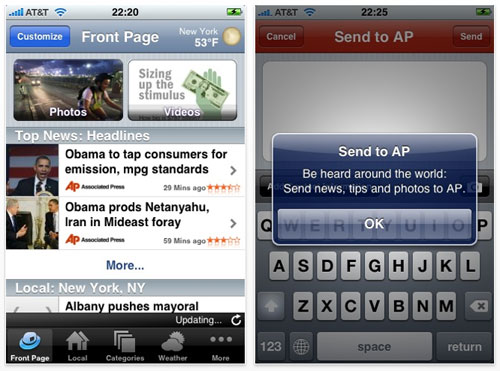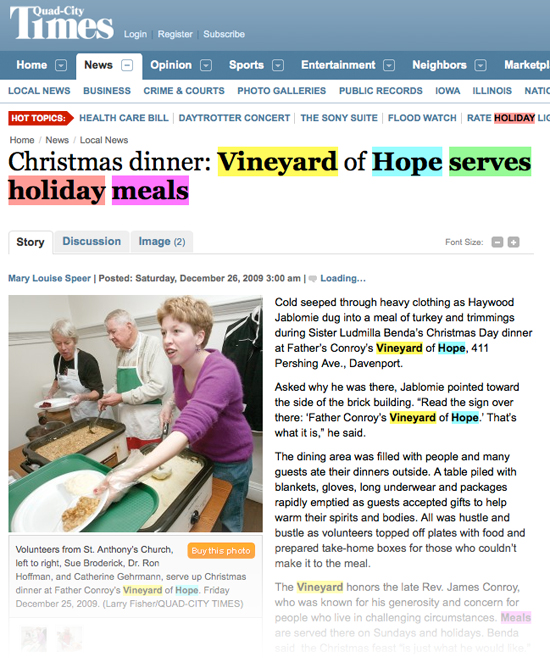During my “on air” days (the ‘70s and early ‘80s), the AP teletype was our station’s connection to the world. During the late 80’s and early 90’s, I spent a good bit of time trying to create a low-cost alternative (mostly for radio stations) to the AP’s wire service. This morning I downloaded AP Mobile to my iPhone.
I have a feeling it will become my default app for news. Text, photos, video… it’s all there. I can flag topics of interest and AP Mobile will “push” those to me. And if I see a story and want to “report” it to AP, the app makes it easy.
Associated Press used to be pretty protective of it’s stories. Perhaps they still are, I would have no way of knowing. The old radio guy in me can’t help thinking of this is a tiny version of the old teletype. And my next thought is, “How could the AP police all of the broadcasters and keep them from using AP stories without paying for it?”
The answer is, I’m afraid, they don’t care. Would I rather have the full-featured, on-demand experience offered by AP Mobile… or hear my local “announcer” read it to me?





